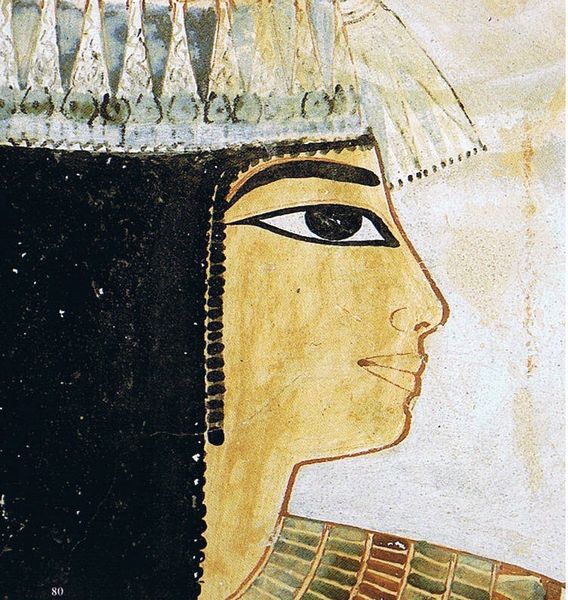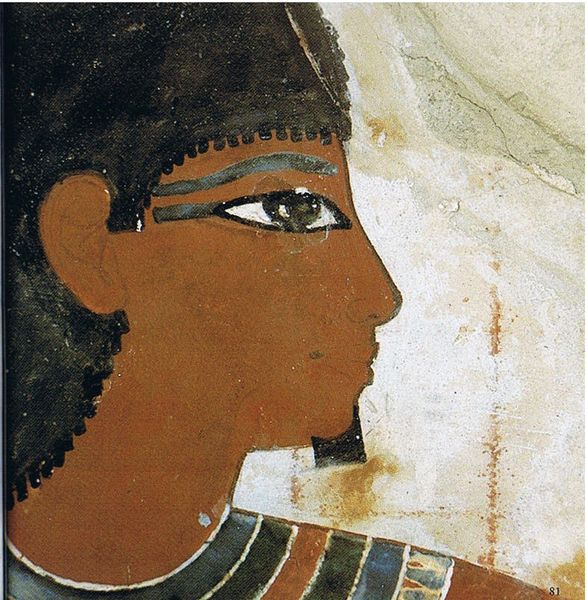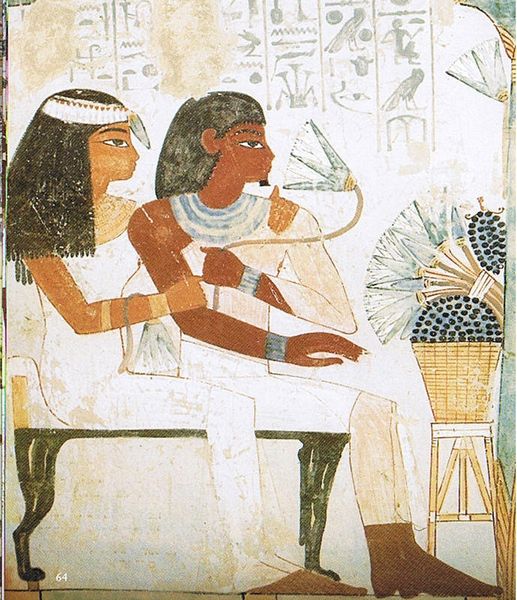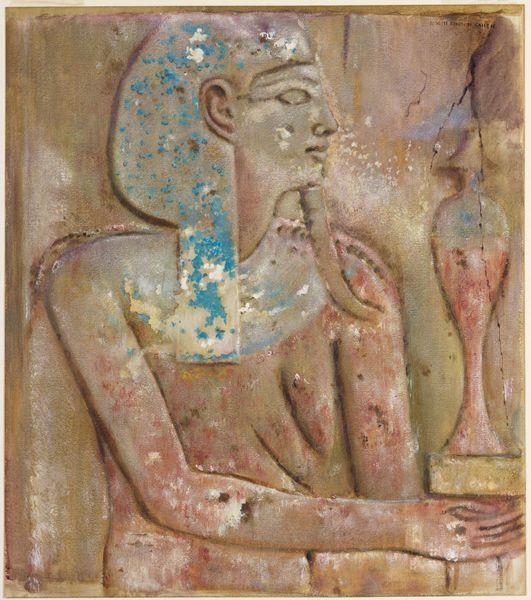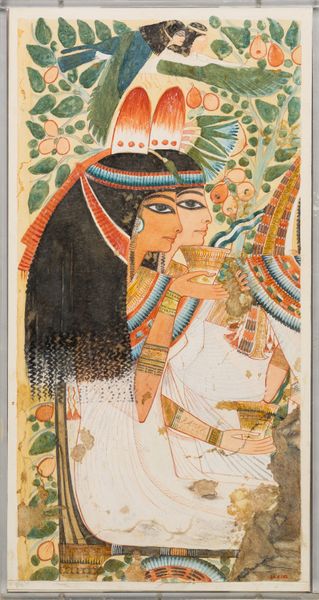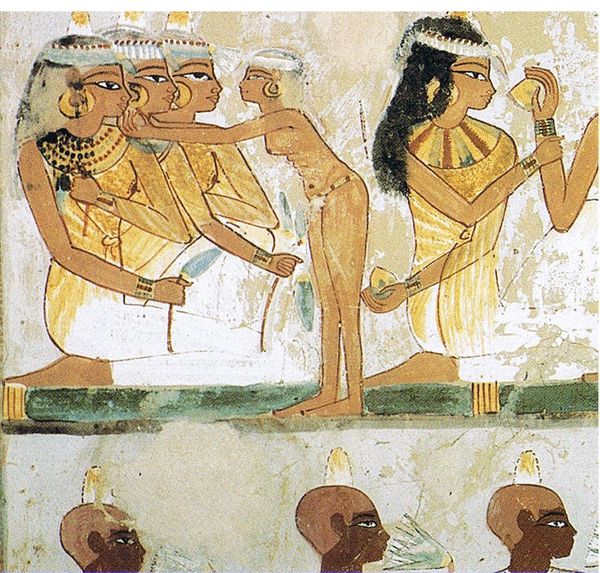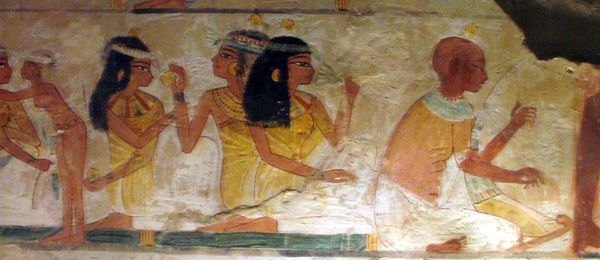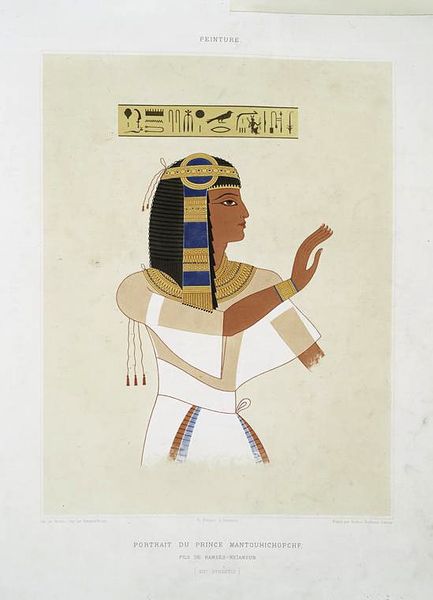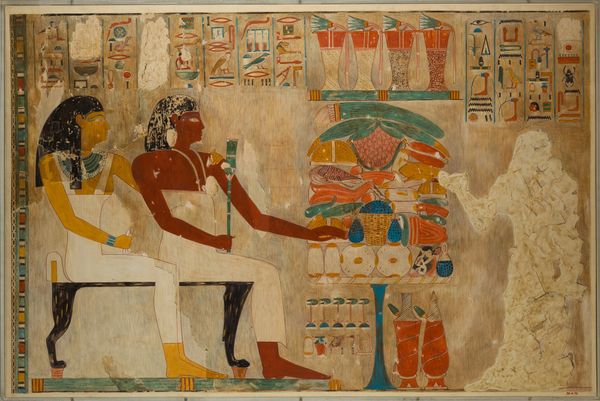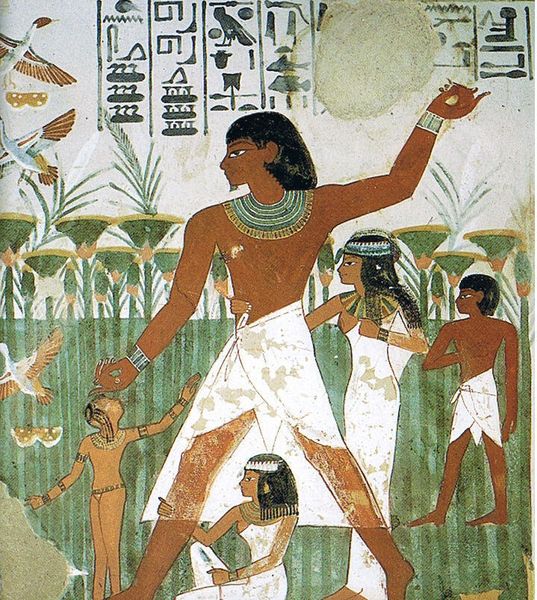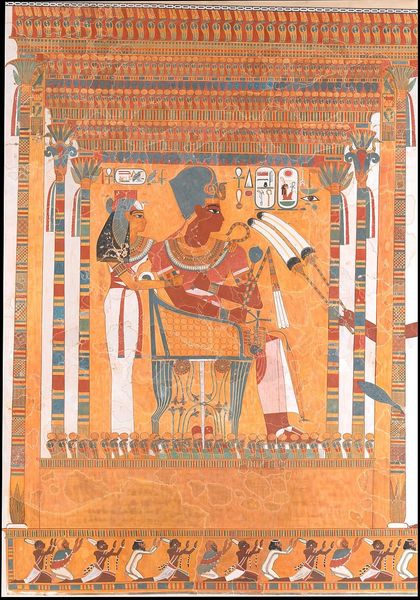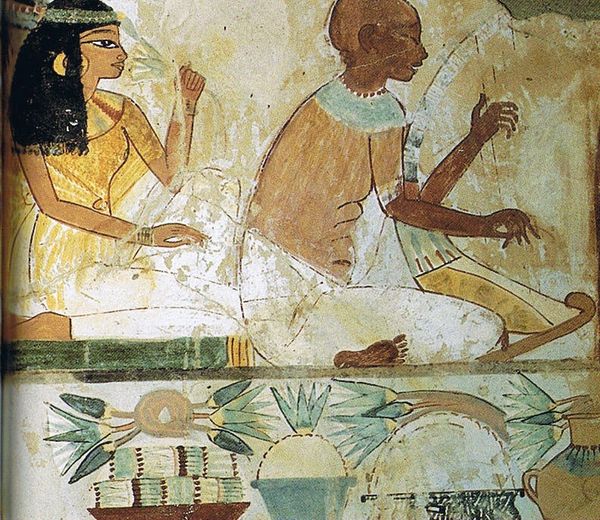
tempera, painting, mural
#
portrait
#
narrative-art
#
tempera
#
painting
#
ancient-egyptian-art
#
figuration
#
form
#
ancient-mediterranean
#
line
#
mural
Copyright: Public domain
Curator: Wow, what a heavy mood in this chamber. Do you sense that stillness, that waiting? Editor: Yes, it’s immediately striking. Formally, this Egyptian tempera mural, “Taui as Observer of the Sacrifice,” circa 1390 BC, arrests one with its stark lines and restrained palette. There's something deeply intentional about its simplicity. Curator: Simplicity, huh? I see a queen, or someone very high up, witnessing… well, the title says it all, doesn’t it? Sacrifice. I wonder what was going through her head at that very moment. Do you see that object she holds? Like a silent knowing, carved in stone or maybe even glass? She herself has been the sacrifice. The use of line to depict detail is exquisite. Editor: Absolutely, the materiality suggests permanence, doesn't it? But observe how the artist, working in the Ancient Egyptian tradition, employs a limited range of ochres, blacks, and blues to emphasize form and hieratic scale. The use of linear perspective isn’t naturalistic but symbolically loaded, prioritizing the viewer’s conceptual understanding. Curator: Conceptual, yes, like she's pulled from a dream, stylized and poised, like some sort of immortal being, don't you agree? Editor: In terms of cultural semiotics, consider the significance of her pose, attire, jewelry—every element communicates status and symbolic weight. It's not merely a portrait, but an ideogram encoding social and spiritual power structures. Her eye as observer and all see-er. She has no choices; is she complicit? Curator: And, I feel, also vulnerable. You know, behind all the royal jazz, maybe? Almost makes you wonder about the artist, what stories were exchanged that shaped such a striking piece that captures so many aspects of being both the ruler and one who may be sacrificed? Editor: Ultimately, the artwork transcends simple representation. It’s an attempt to construct meaning, negotiate power, and confront the complexities of mortality. Curator: Leaving us with more questions than answers, I see what you mean! Editor: Precisely! An enduring testament to the power of form.
Comments
No comments
Be the first to comment and join the conversation on the ultimate creative platform.
